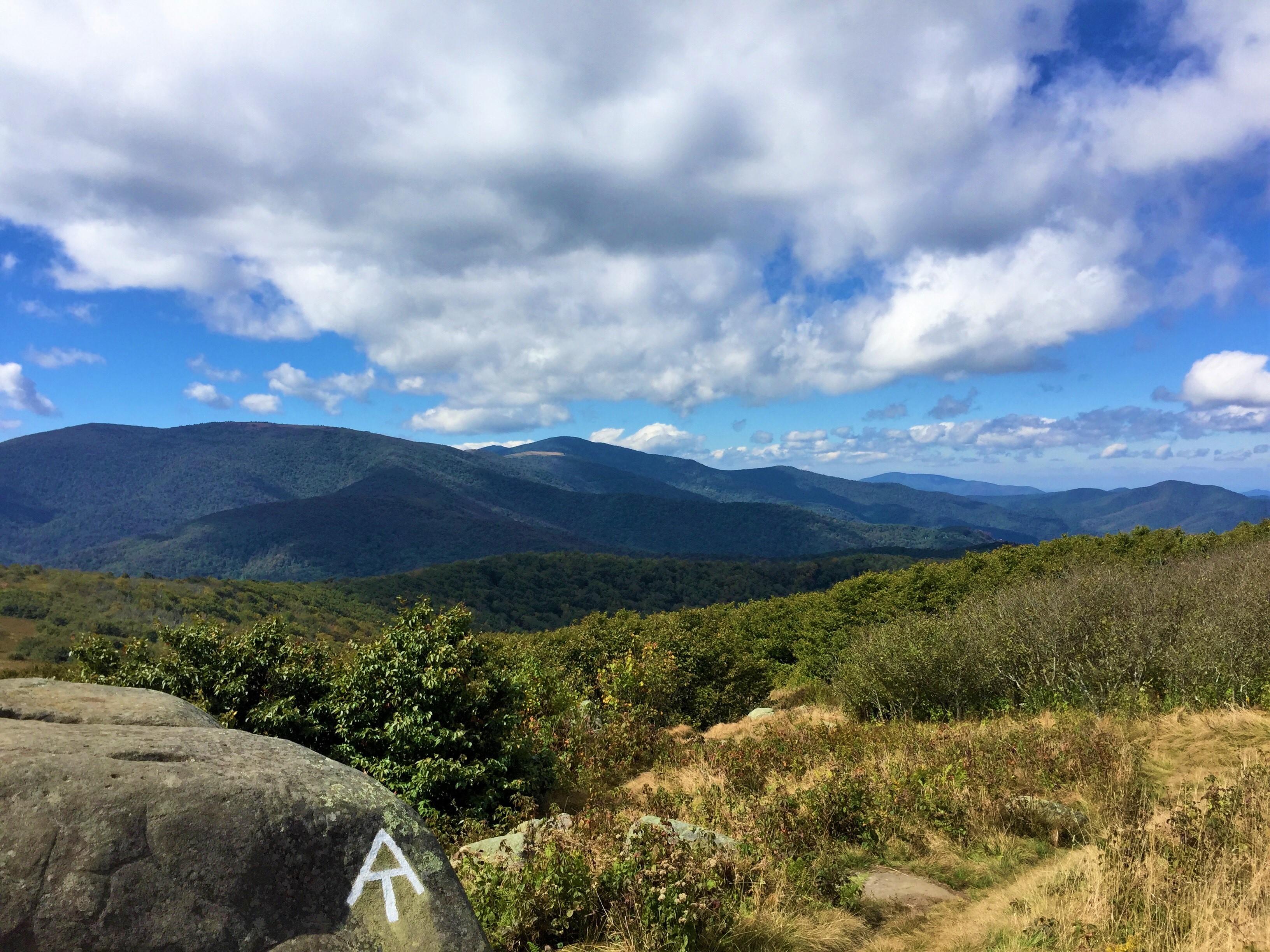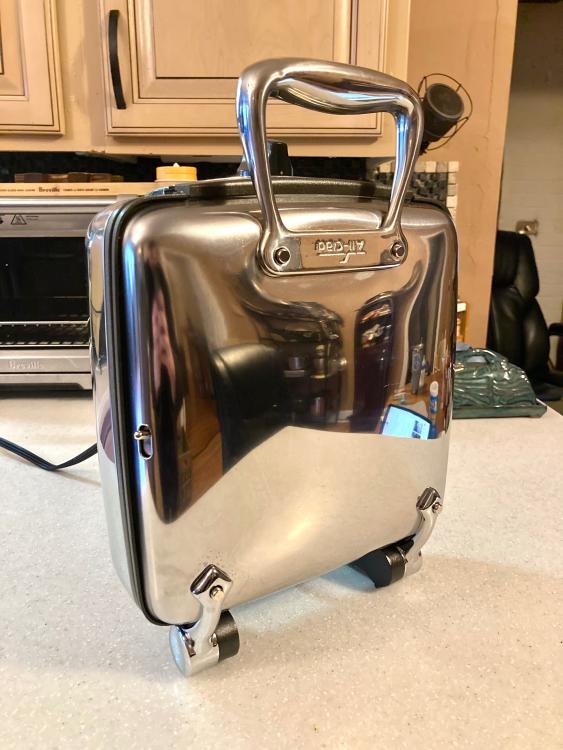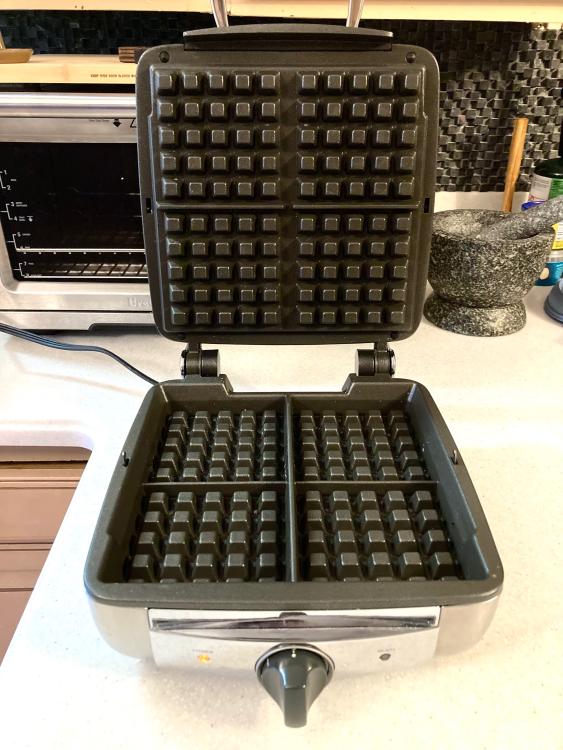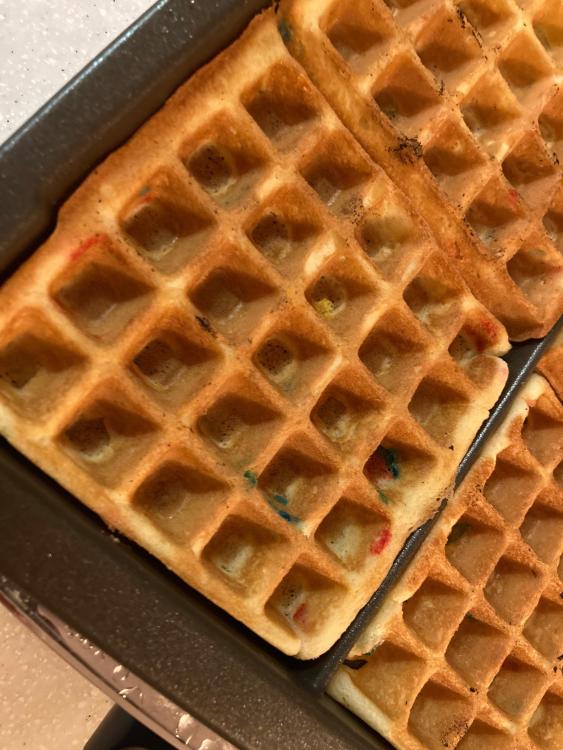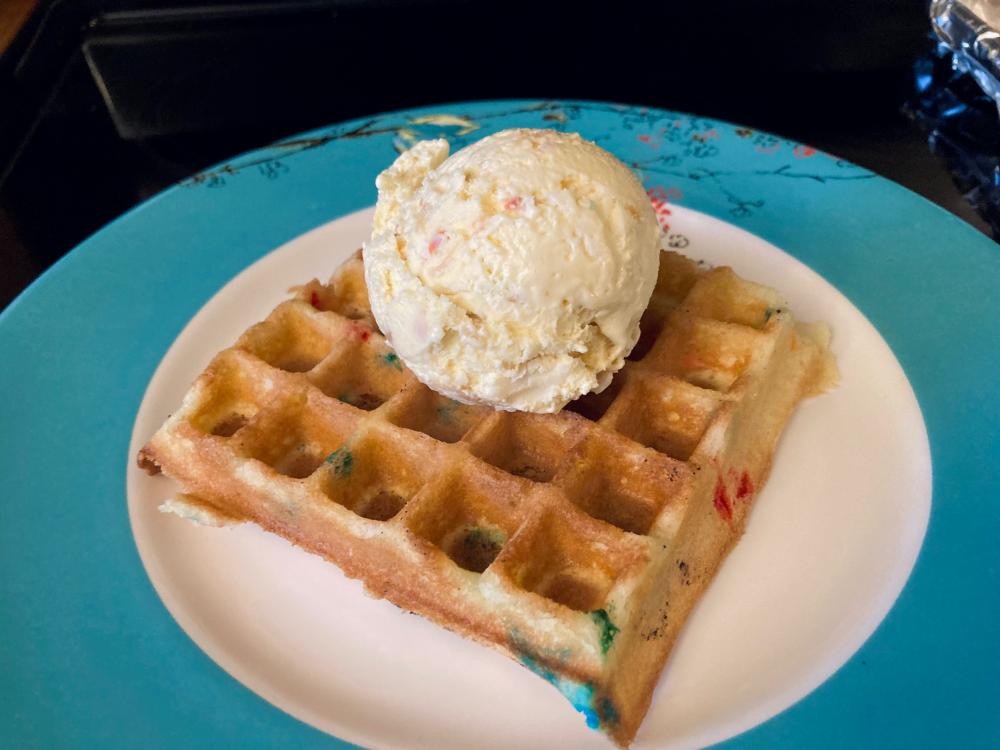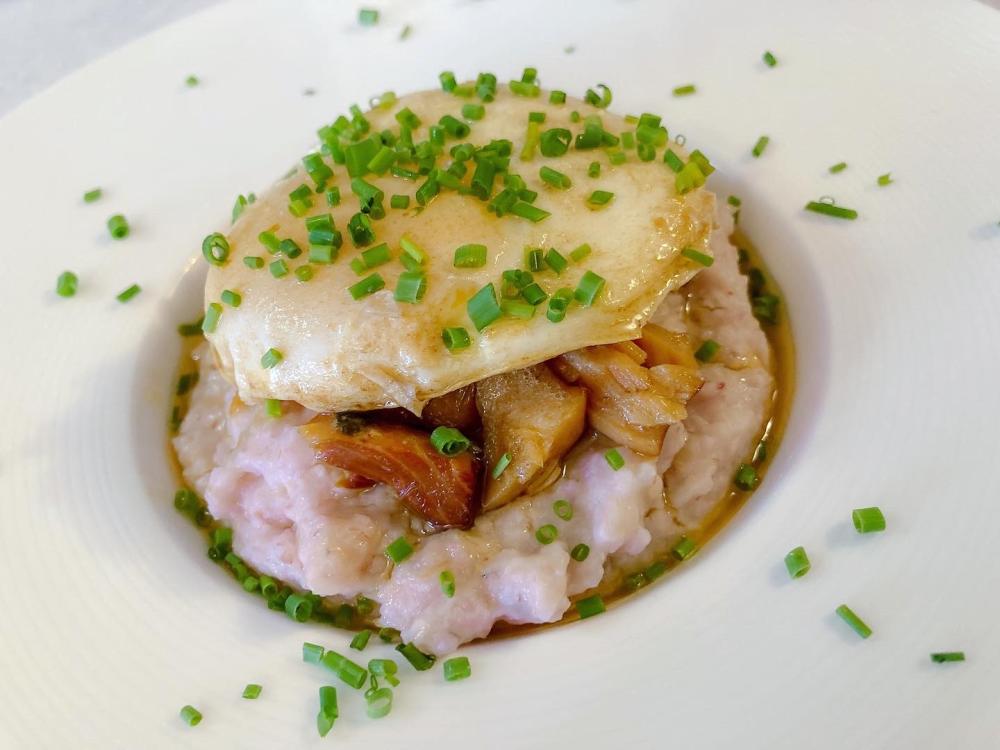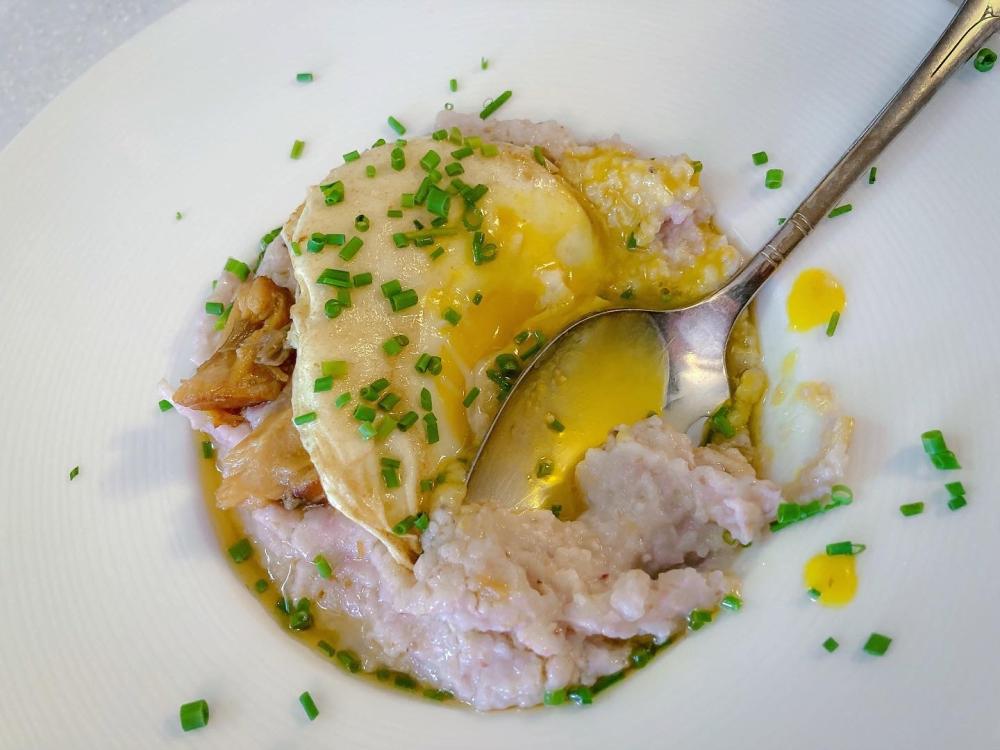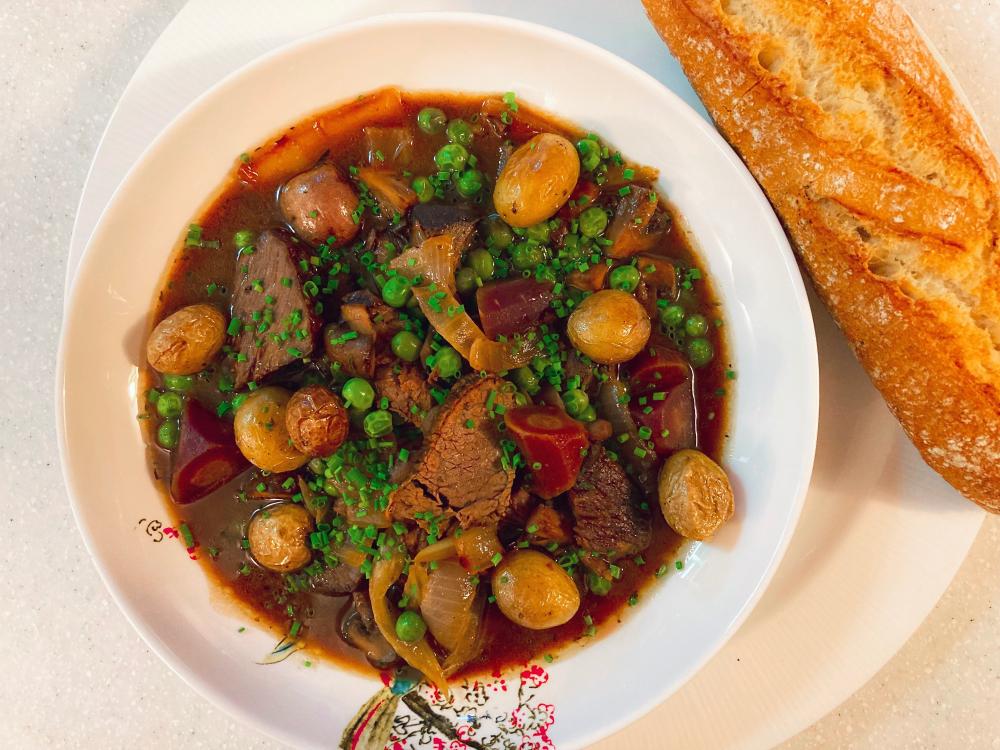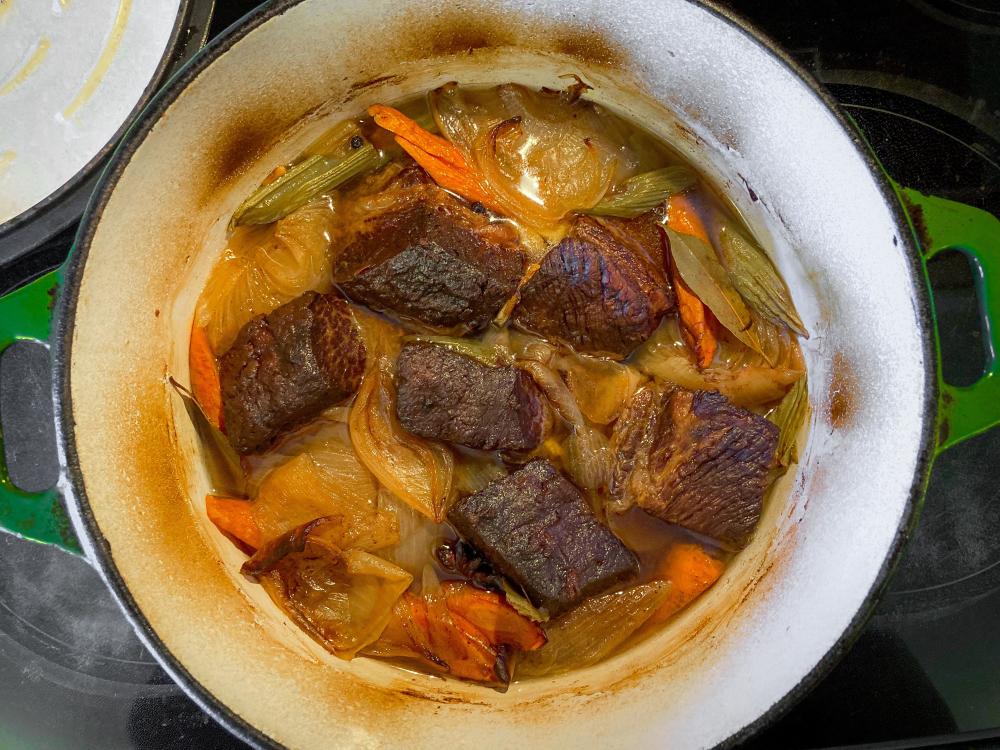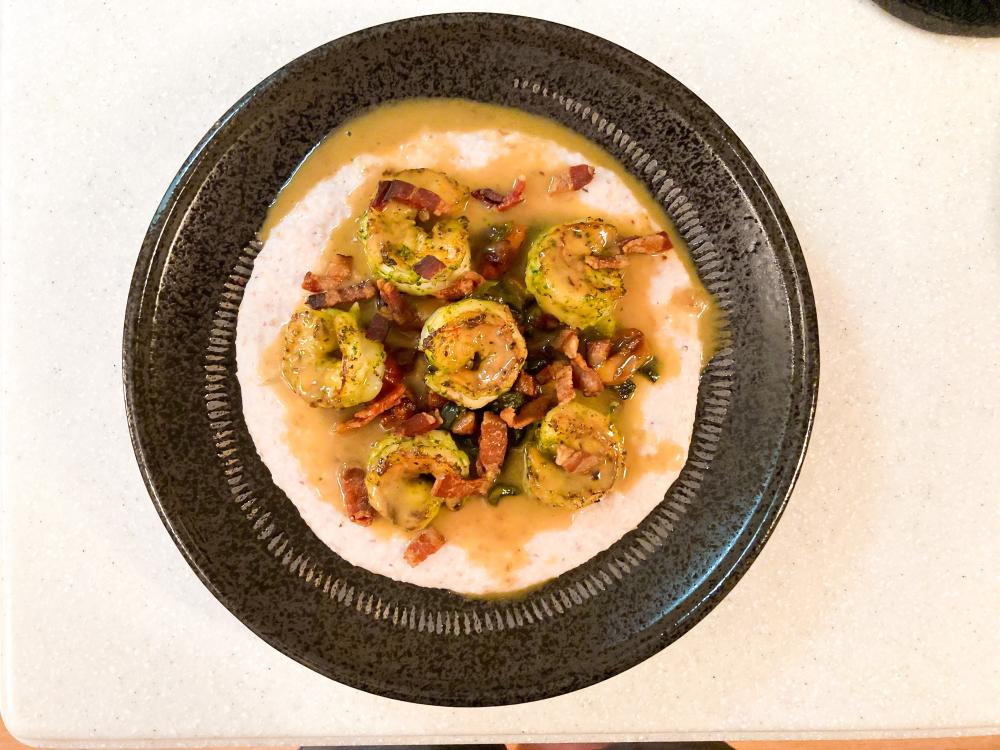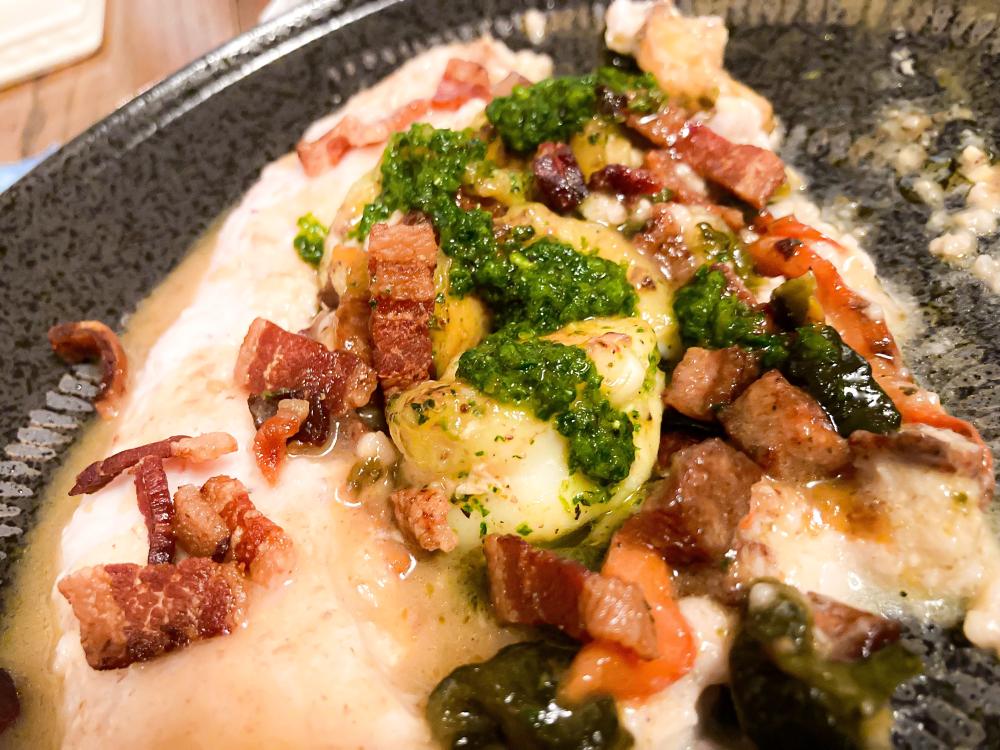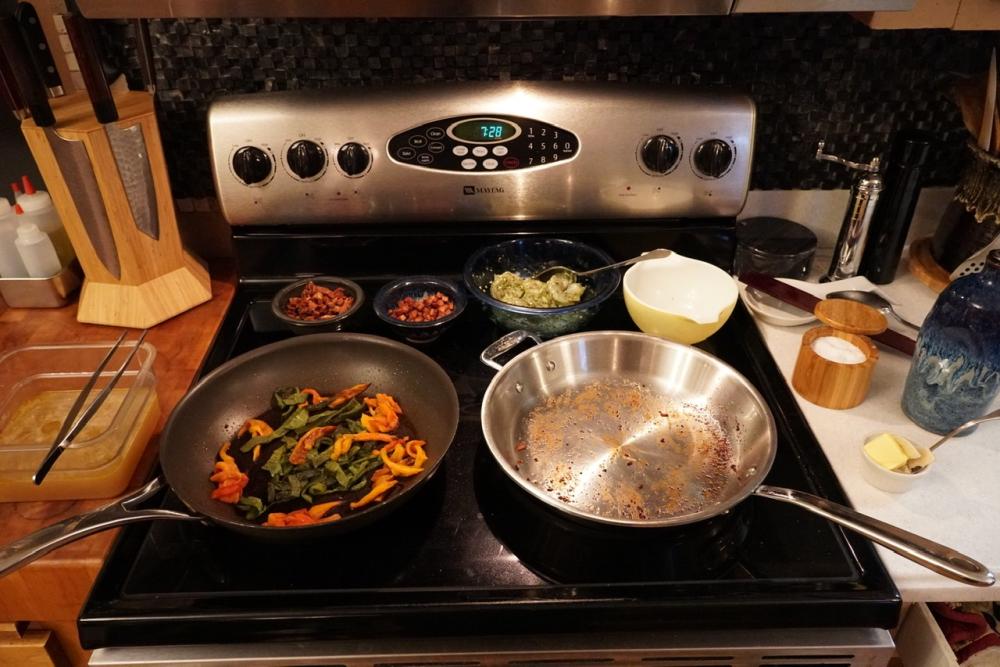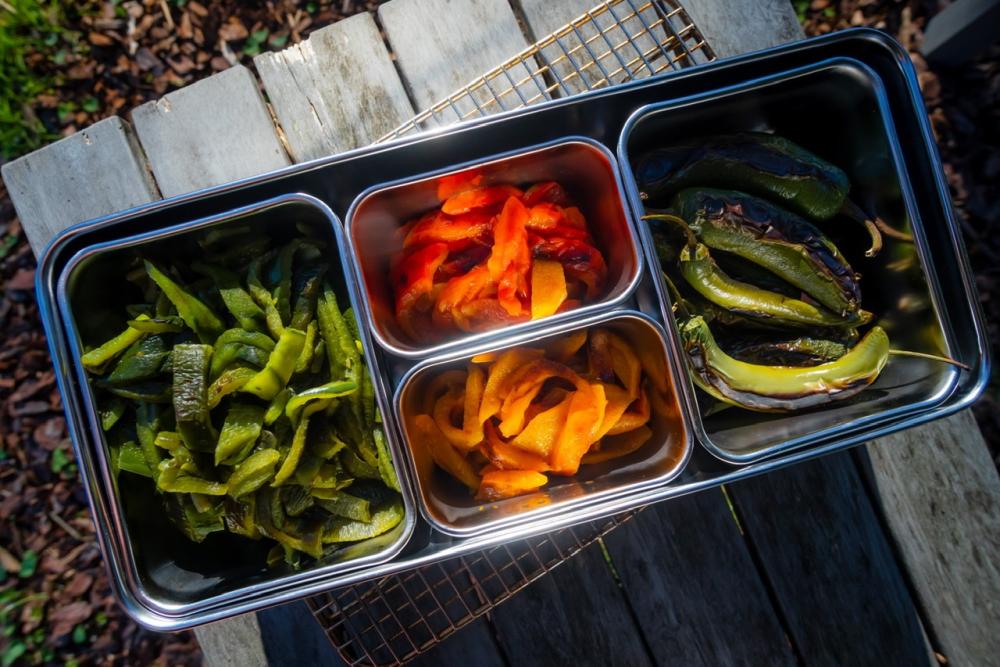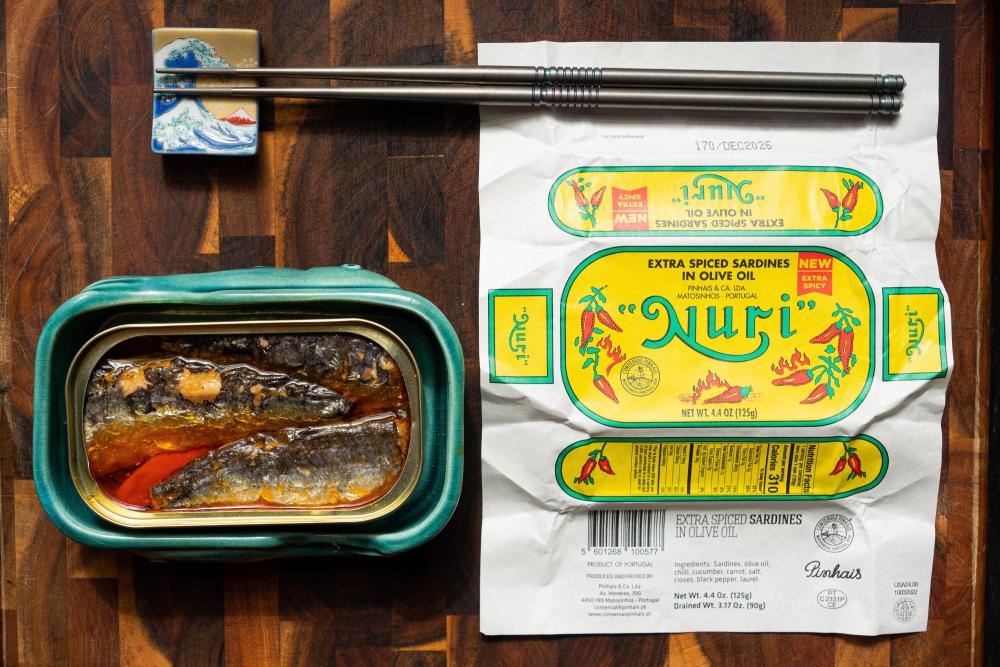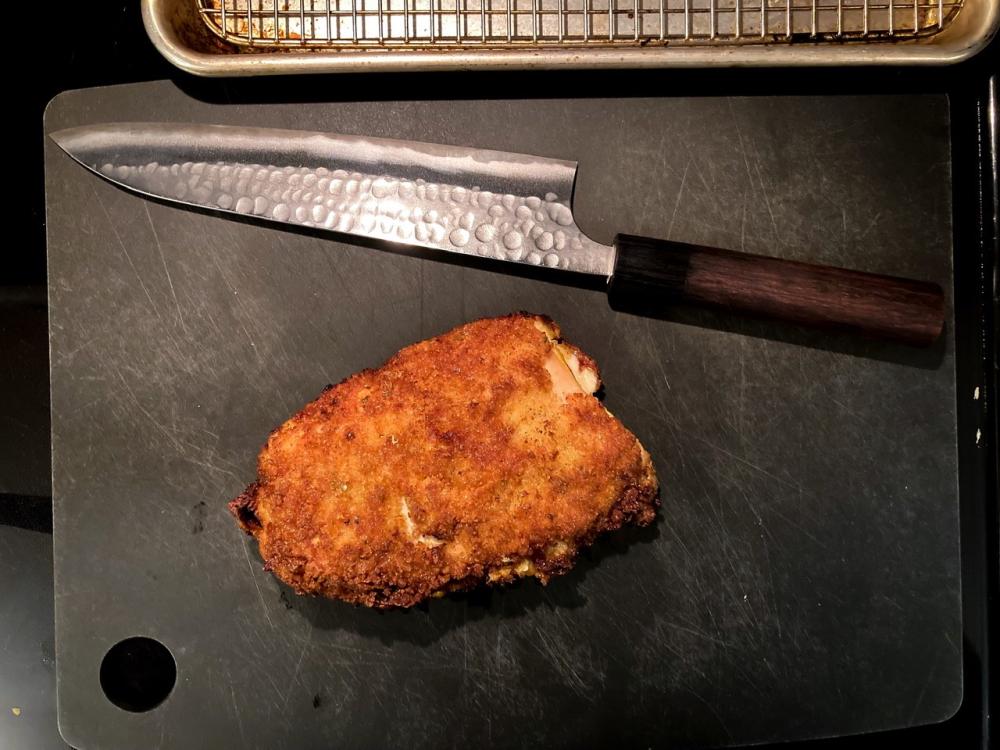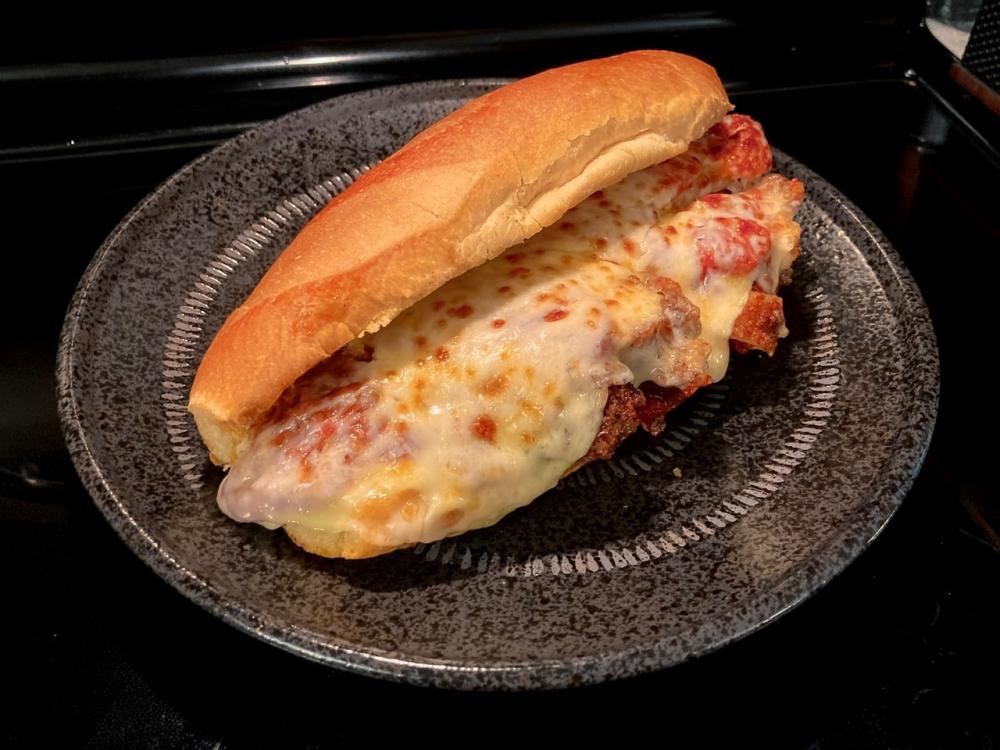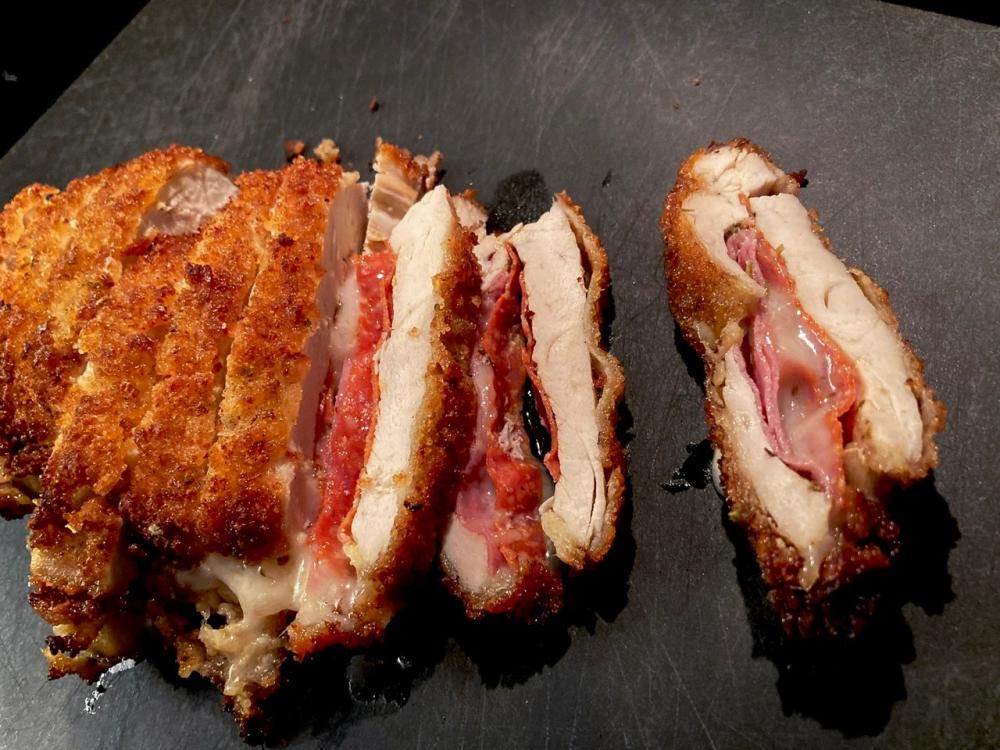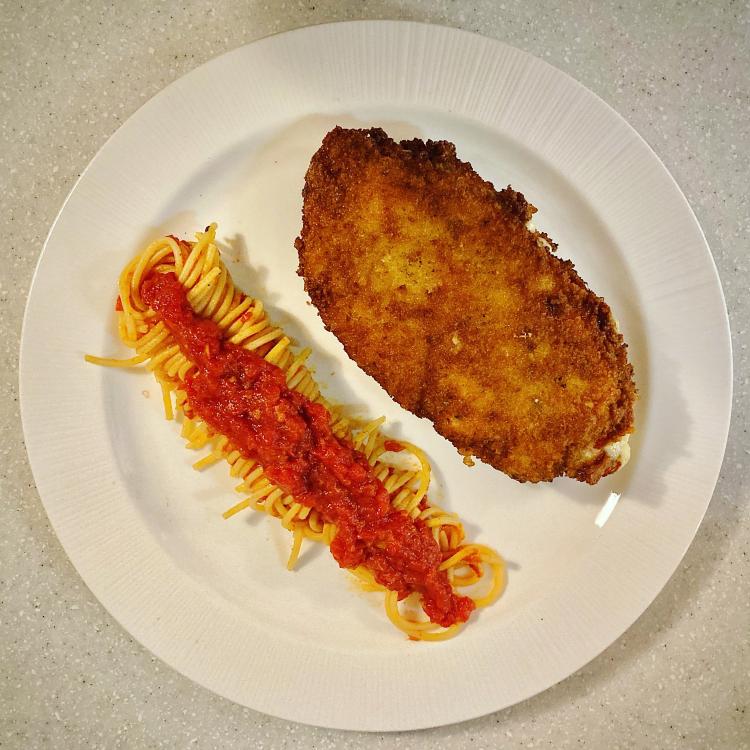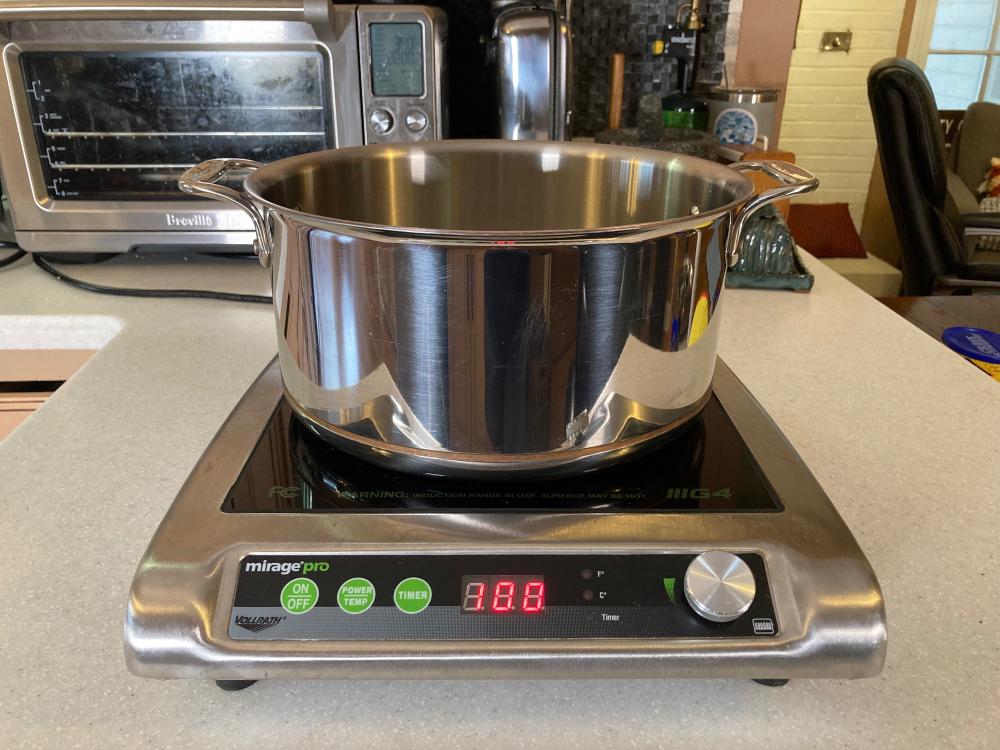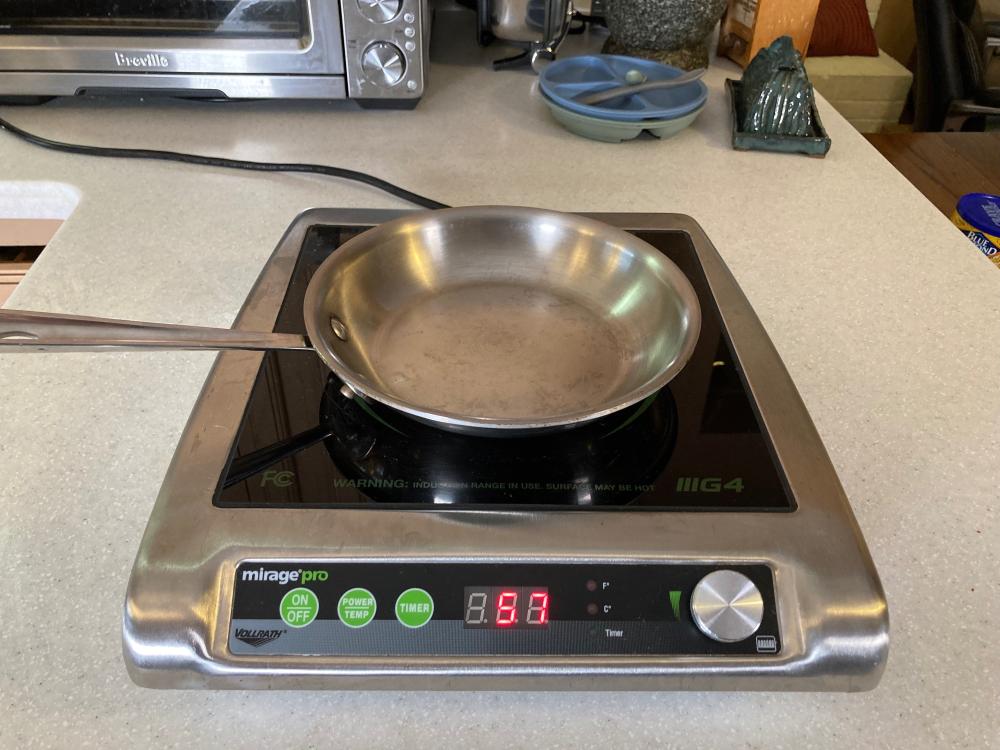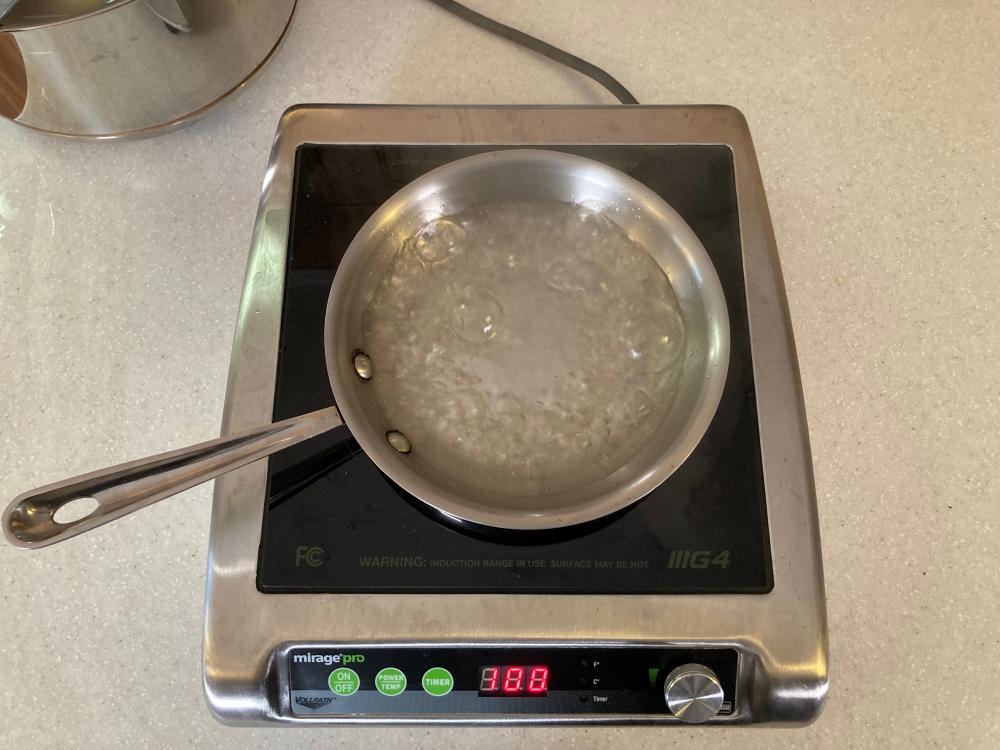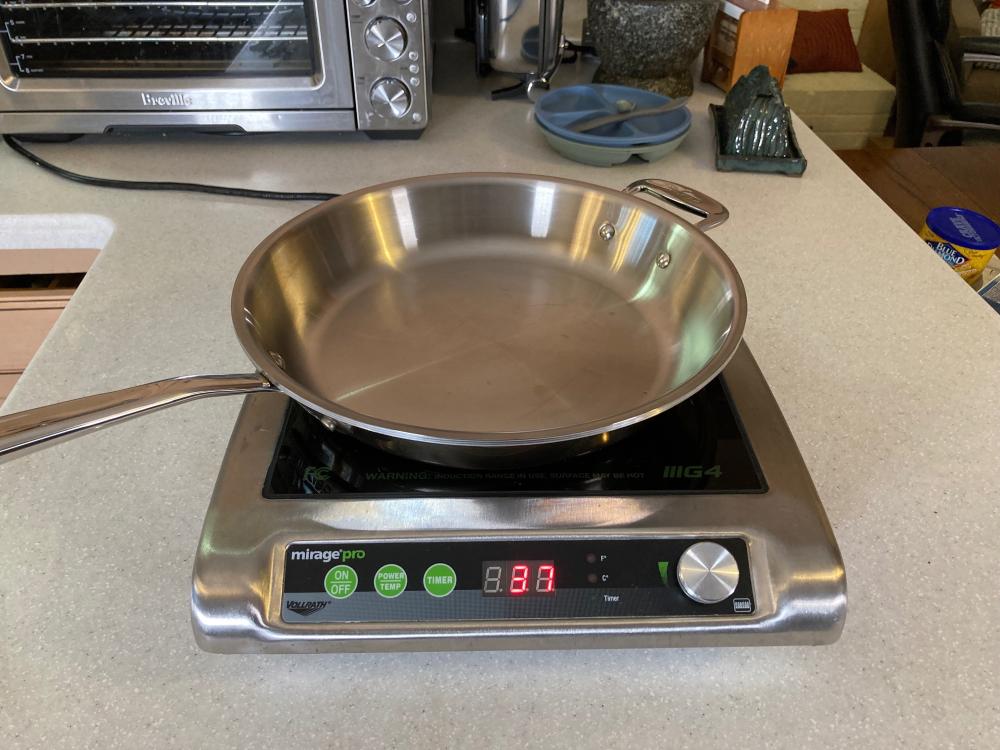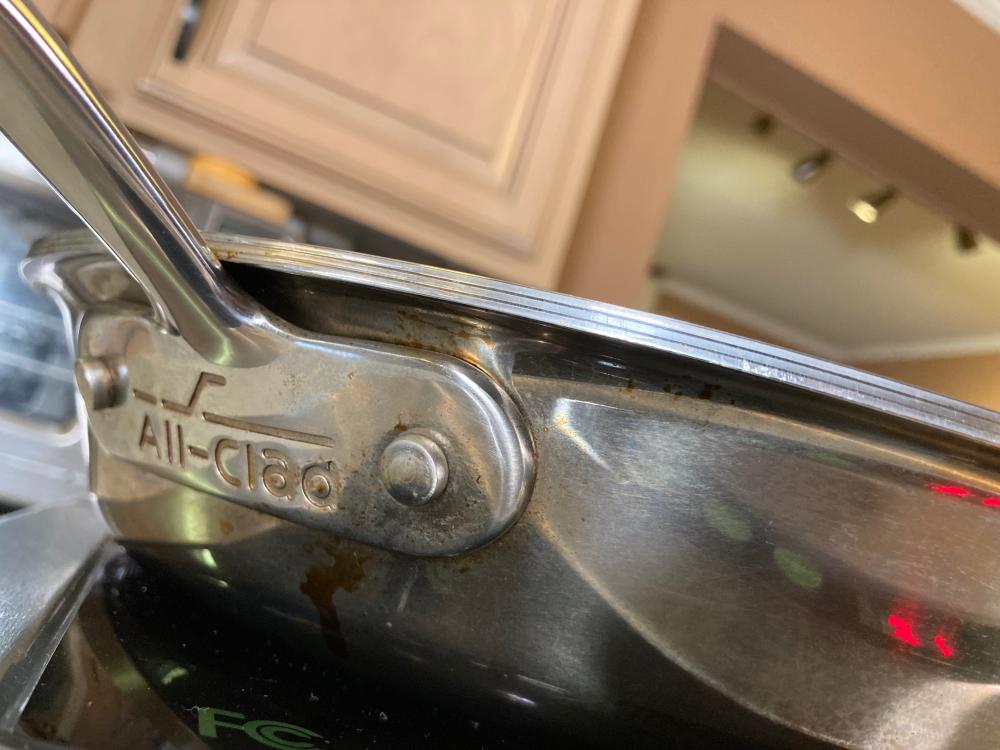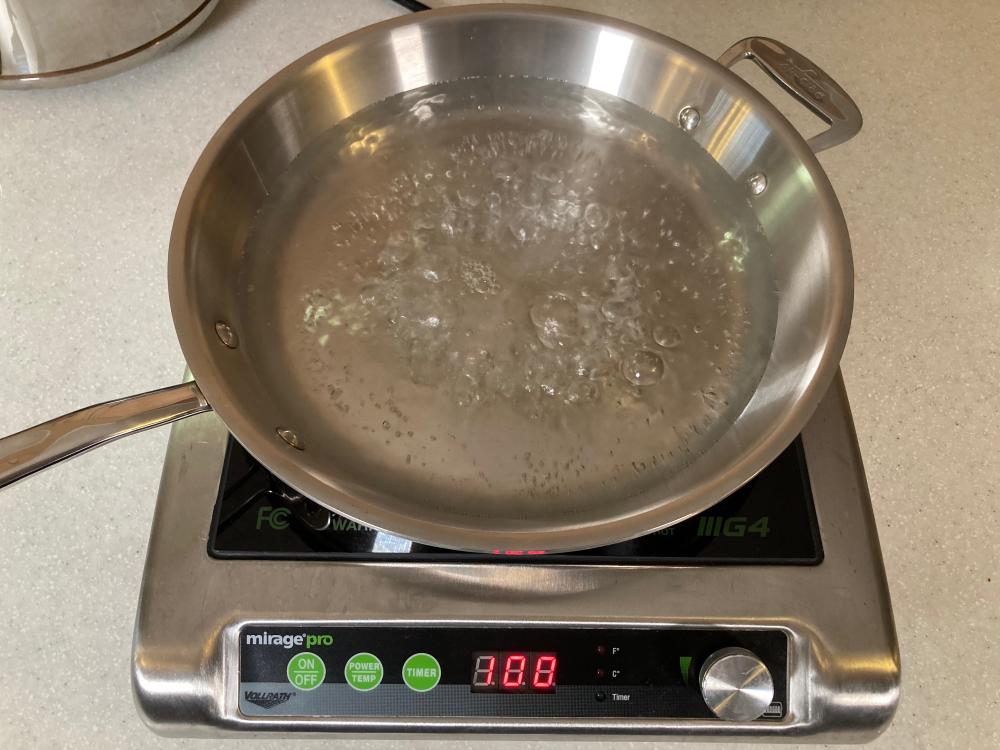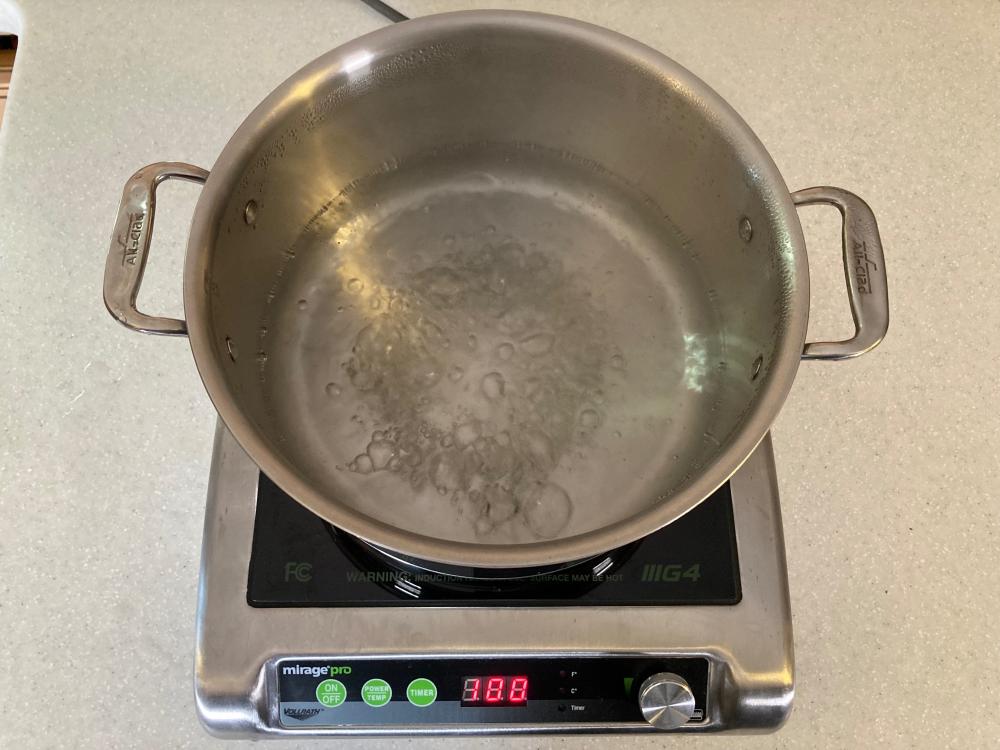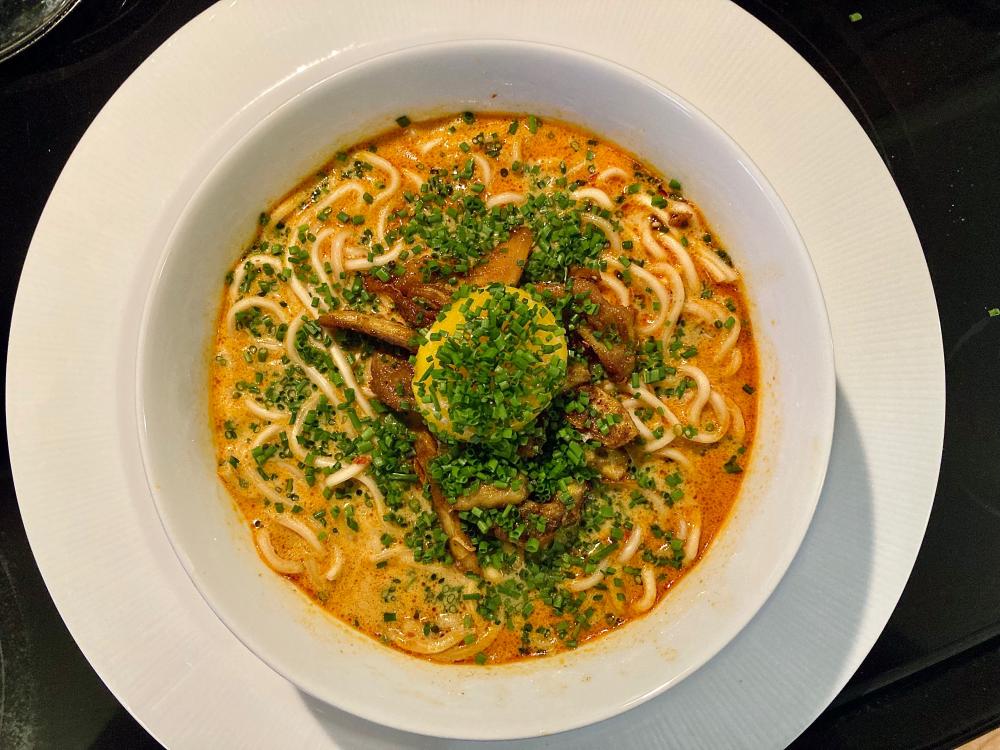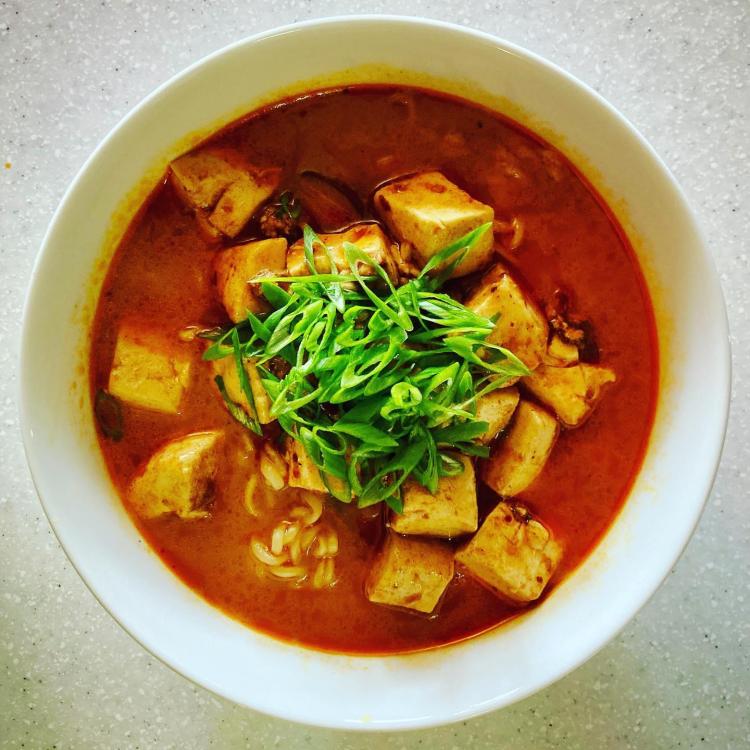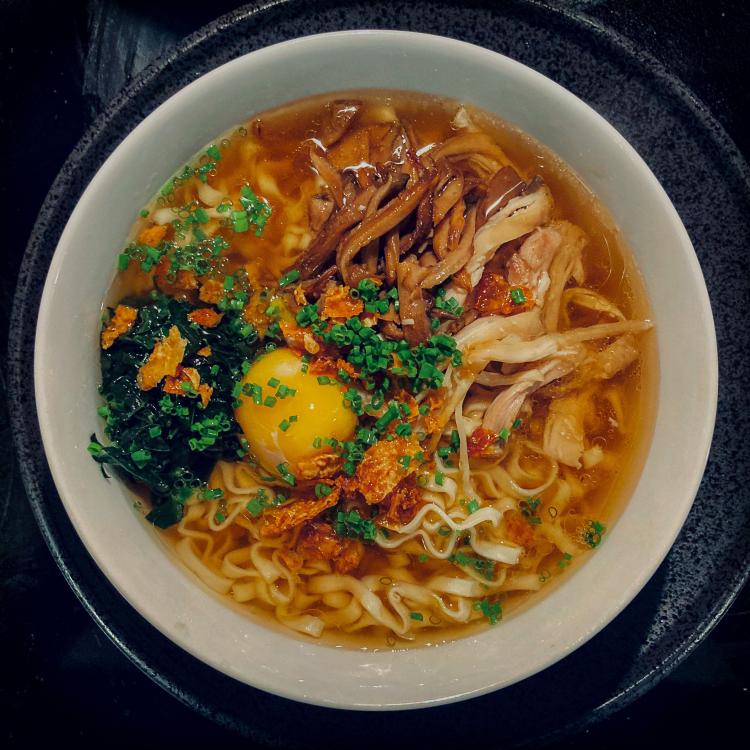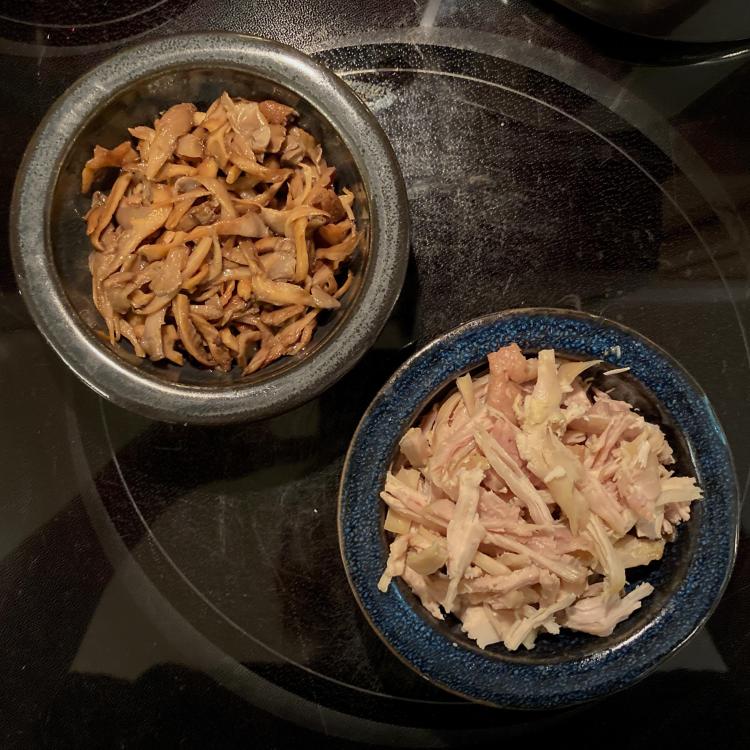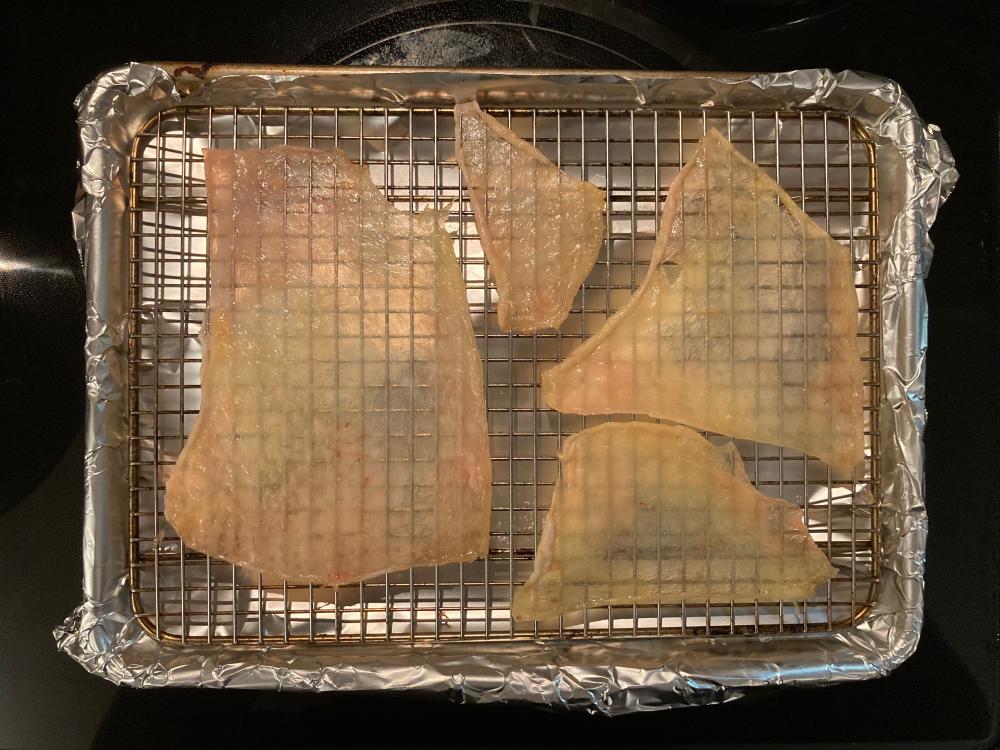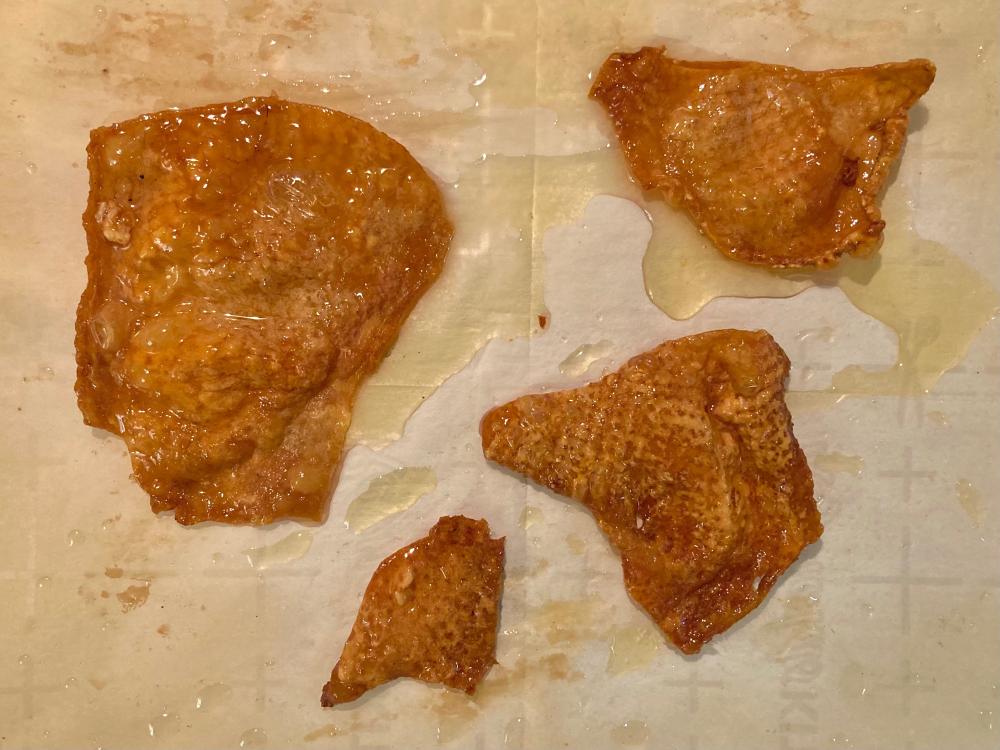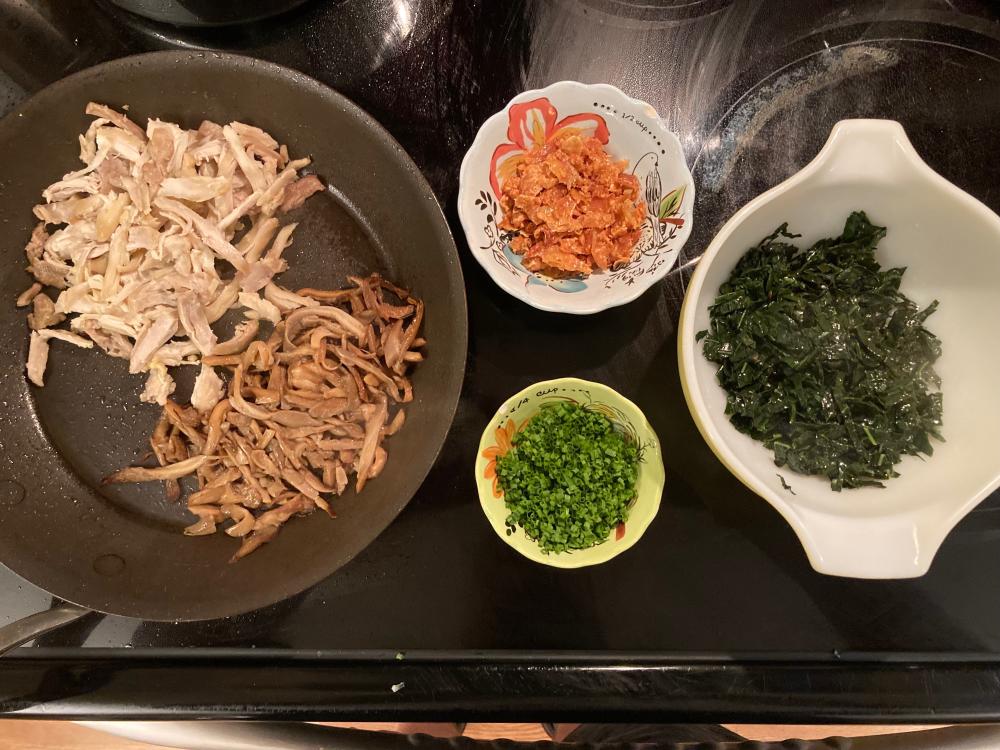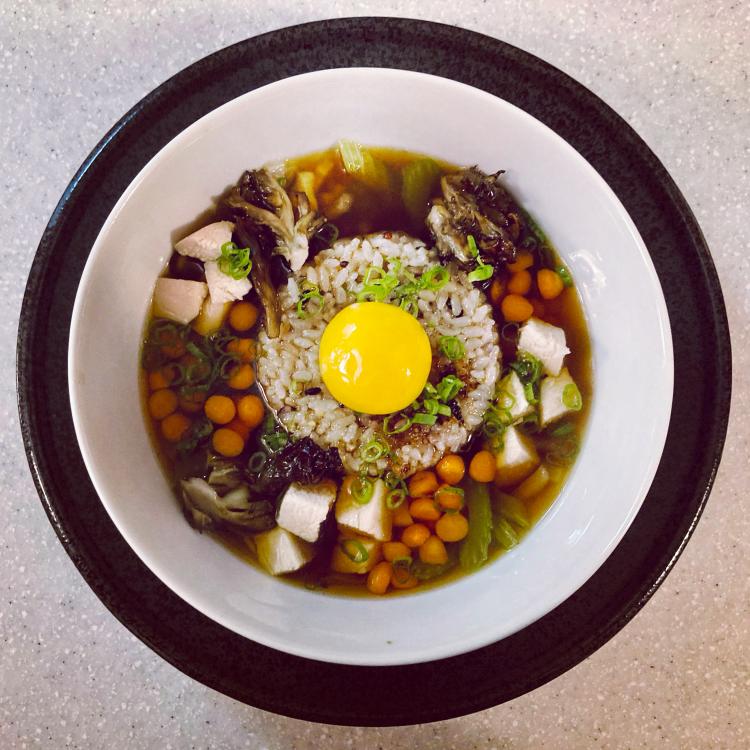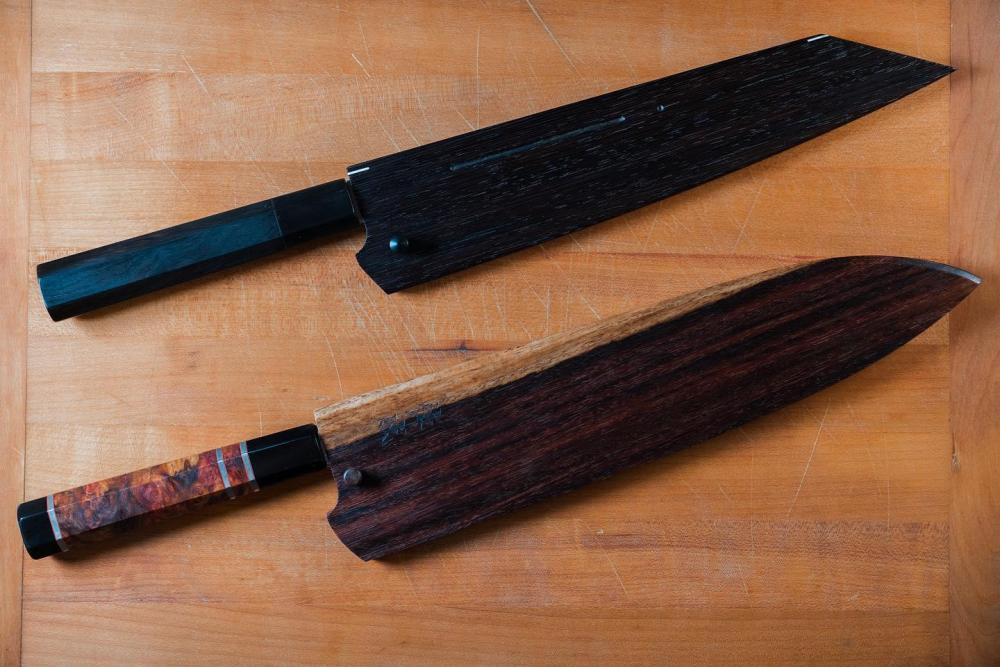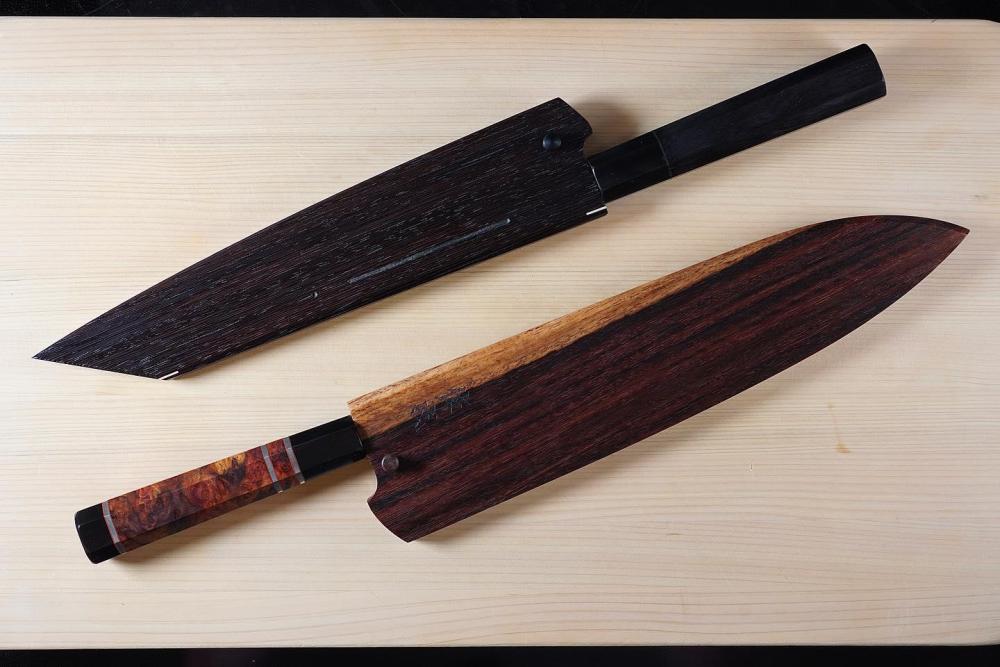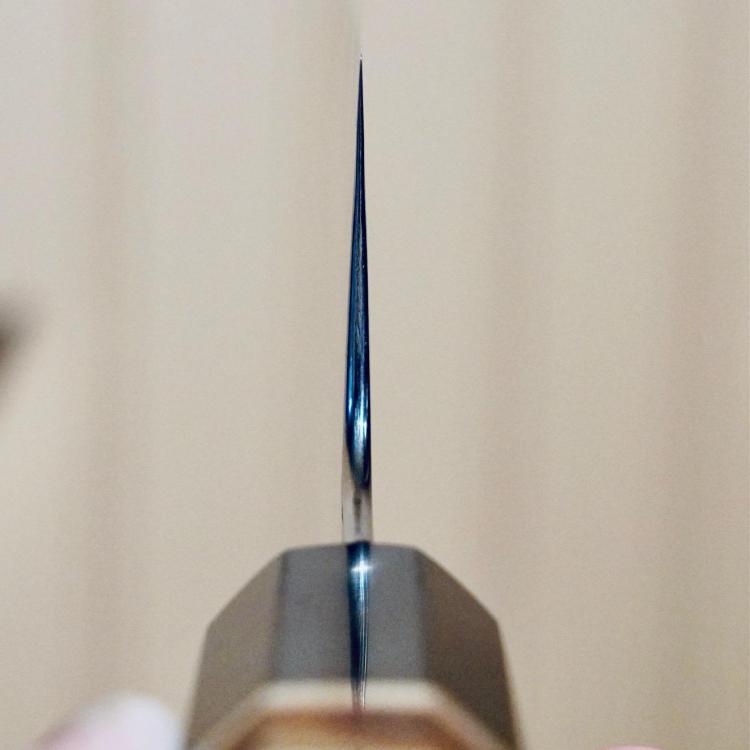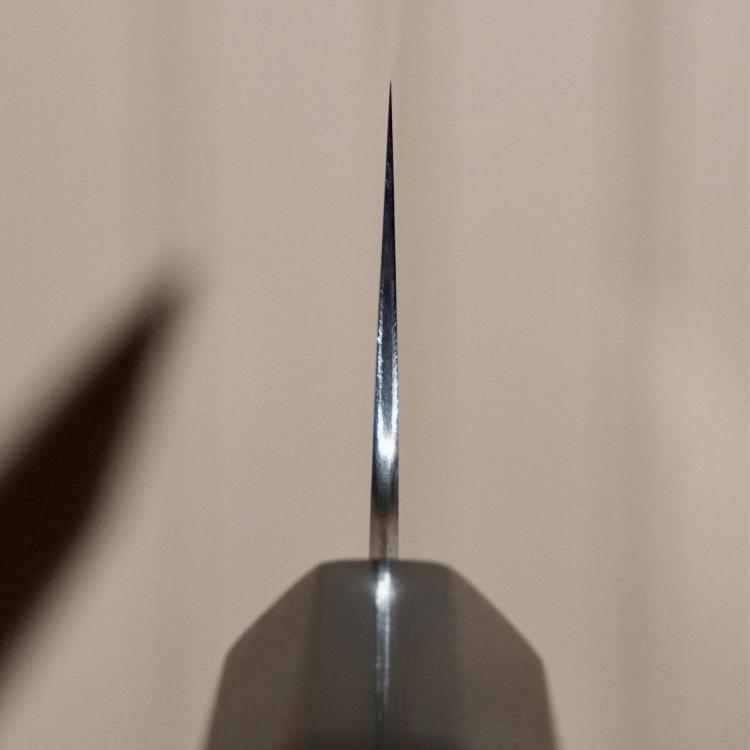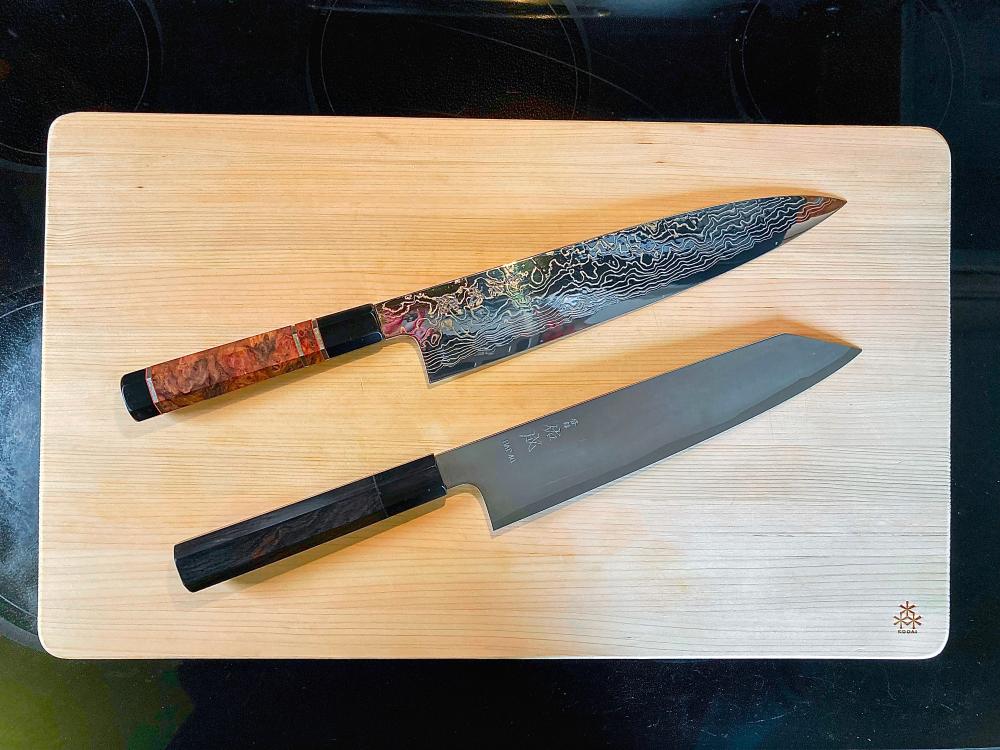-
Posts
1,807 -
Joined
-
Last visited
Content Type
Profiles
Forums
Store
Help Articles
Everything posted by btbyrd
-
If anyone's savvy, the official All Clad factory sales event is on now at Home and Cook Sales. Use code VIPSDMAR0923 to save 15% and get free shipping. They have the 2 and 4 waffle version of my maker for sale, as well as the deluxe 4-waffle version with a display and removable plates. Be forewarned that the handling time before items ship is like 10 days or so.
-
The cast iron ones are great ways to start a kitchen fire. Ask me how I know!
-
I love when I see CCKs pop up on YouTube. Makes me feel legit. Lucas Sin regularly rocks a stainless CCK, like in this egg roll video: This guy's channel is a masterclass on how to use a CCK cleaver: I mean, he literally teaches a masterclass on using a CCK:
-
I went down this rabbit hole last year before finally landing on the All Clad 4-square waffle maker, model WD700262. It's usually around $200, but goes on semi-regular sale at the major culinary retail outlets. But if you're going to buy anything from All Clad, do what I did and wait for one of their seasonal sales of factory seconds at https://homeandcooksales.com/ . That's their official website for seconds, so don't feel weird about signing up on their e-mail list to get notified of when the sale is on. Alternatively, you can try to source one from Capital Cookware on eBay, which is an authorized retailer for factory seconds. Anyway, I got mine during December's Home and Cook Sales sale, when it was priced at $119.95. I used the Honey app to find a coupon code that got me free shipping and 15% off, so my total was $109. Hard to beat that! My original plan was to buy the Waring Pro flip over waffle maker, but Waring stopped selling consumer waffle makers due to some corporate restructuring. Cuisinart then started selling rebranded Waring flip over waffle makers, changing the dial/knob on the Waring to a slider. That seemed much harder to clean than I'd like. But the Waring/Cuisinart dual flip waffle maker was highly regarded. It's what I was looking for, but all of them were out of stock everywhere. Things don't seem to be much better now in terms of availability. Oh well. Here it is in action: But back to my iron. It is a beautiful hunk of metal, and it gleams on the countertop. The top locks so it can stand on its side, which makes storage less of a pain than with bulkier presses. The iron has has deep wells that produce crispy and delicious waffles. While I think I may prefer a round waffle generally, this makes four square ones at once -- and it's hard to argue with making four at a time. I wasn't really aware as to how well waffles freeze and reheat. I'd tried it with pancakes in the past, and the results were *okay*. But waffles from the freezer? A quick trip through the toaster oven, and it's waffle time, baby! It's my wife's birthday this week, so I made Funfetti cake waffles for her Sunday breakfast. Topped with Milk Bar's Birthday Cake ice cream. There was Neuske's bacon at the party too, but it's not pictured.
-
The standard knife-nerd recommendation for a thin slicing cleaver that won't be used on bones is from CCK, which is a company based out of Hong Kong. The usual recommended models are the KF1303 (which is made from reactive carbon steel) and KF1912 (which is stainless). These knifes look rustic but offer incredible cutting performance thanks to their thin geometry. They're much better performers than their rustic appearance might let on, and will leave most comparable European knives in the dust. One sad thing is that CCK changed the branding over on their knives. They used to be stamped/engraved into the side of the knife, but the new ones have a laser etch with a QR code. Kind of a bummer. But whatever. I got my CCK KF1912 from Chef Knives to Go, which has a wide-ish selection of cleavers. I'd also look at the Fook Kee slicers, as well as those from Chopper King. The ones from Fook Kee are very similar to the CCKs, but they have the older style, non-lasery branding on the side and come with a nicer handle. The Chopper Kings are also similar and have nice-ish handles. Both the Fook Kee and Chopper Kings are made in Taiwan with Japanese steel. If you do get a cleaver from CKTG, consider also picking up a cleaver saya for it. These provide such better protection than edge guards do. It's so nice to be able to throw a cleaver in my knife bag and not have to worry about it banging around in there.
-
-
I make stock with the shells and gimpy shrimp. The bacon and andouille get cooked in a pan first, then the shrimp. That builds up a lot of fond. Drain the pan, then cook off some butter and flour and deglaze with the shrimp stock until it comes to a boil. Swirl in cubes of cold butter. I do a variation of this every time... sometimes there's vinegar or lemon, sometimes not. Sometimes I spice it up with some cayenne, sometimes not. I was also serving it with green chile adobo so there was plenty of heat elsewhere.
-
Shrimp and grits. Unicorn Grits from Marsh Hen Mill with some wild caught 16/20s. Garnished with andouille, bacon, and roasted chile melange. And shrimp gravy. Served with Rick Bayless's green chile adobo on the side.
-
Extra spiced Nuris. Eaten over the sink, like a rat. Man, compression didn't do that image any favors.
-
Spaghetti pomodoro with olive oil fried Joyce Farms chicken breast stuffed with Genoa salami, pepperoni, and Tillamook provolone. Breadcrumbs made from a local bakery’s rosemary bread.
-
My cookware addiction, like all of my consumptive addictions, is mercifully self-limiting. Once I (thoroughly) cover the bases, I don't feel a strong pull to buy more. If a new pot or pan isn't going to do much for me functionally, I don't find it all that desirable. But if I've got a particular need for a pan, or if there's an obvious gap in my batterie, I feel the urge. Here's a quick outline of what I have with some quick commentary. From All Clad I have 3 D3 saucepans (or pots, as normal people call them) with lids in 1.5qt, 3qt, and 4qt sizes. That's a pretty good range, though I kind of want a 2 or 2.5qt saucier to fill in the gap between the 1.5 and 3qt pans. I also have two D3 skillets, 8 and 12 inch. These get used less frequently than they used to, as I tend to use my nonstick and carbon steel skillets more often for some reason. The D3 skillets are slightly lighter weight than I prefer, but they're still great performers. Moving away from the D3, I have the D7 12" skillet. It is big, bad, and in charge. Huge and heavy and awesome. It's my stainless alternative to cast iron or carbon steel for searing. The stainlessness makes it great for making acidic pan sauces, which are my preference. I'd like to have a 10" Copper Core saute pan to do some shallow frying in. My last 2 All Clad pans are stock pots. The first was featured above: a Copper Core 8qt stock pot. It's more of a soup and pasta pot than a stock pot, given its small size. But it's great for soups. Nice big flat bottom also sears well and the high walls mostly contains the spatter. In Stock Pot country, I also have a Mystery Line All Clad stock pot with steamer inserts that I was gifted for my wedding many years ago. I think it's 12 qts. Unfortunately, it's not induction compatible. I basically only use this to make larger quantities of stock on the stovetop or in the oven. But I mostly use pressure cookers for stock. So yeah, it's not super useful. Maybe if I get into making tamales, or if I want to fry a turkey on my wok burner. Or something. My only other piece of stainless cookware also mostly gets used for stock making. It's a cheap Presto 8-qt pressure cooker with a disc bottom that works pretty okay. I wish I had a fancier pressure cooker, but I bought this when I was a grad student just getting into cooking in a serious way. It was a bargain, and I'm glad I have it. The base works very well as a standalone pot, with the only drawback being the handles that aren't oven-safe. I'd happily swap it out for a Kuhn Rikon or a Fissler though. Who wouldn't? And I have an Instant Pot too, so... That covers my stainless cookware. Before I go into the other metals, I'd like to give a shout out to my 3 Alonon copper nouveau nonstick skillets (8, 10, and 12 inch). Unlike most nonstick pans, which are thin and tend to overheat locally, these have a thick layer on the bottom of aluminum, copper, and stainless (at least I think that's what they are). It's not a lot of copper, but it's nice. The sides are very curved/sloped, which I don't prefer, but the shape works well for tossing food. They're heavy nonstick pans that heat evenly and don't lose all their heat when you throw a lot of food into the pan. Unfortunately, Anolon stopped making them. It's almost time to replace them. Sad times. Nonstick pans are the only disposable pans in my kitchen. Everything else should last a lifetime. For cast iron, I have a 12" Lodge skillet I got as a broke undergrad. Maybe the best $20 on kitchen equipment I've ever spent. I also have 8 and 10 inch vintage skillets that I inherited from my grandmothers. That's pretty cool. They mostly get used for cornbread duty. I also have a 4.5qt Lodge dutch oven that I use mostly for deep frying on induction. It's also a preferred vessel for certain "no knead" bread recipes, but I don't bake ever. Ever. Finally, I have an enamel coated Tramontina 8 qt dutch oven that was recommended by Cook's Illustrated in like 2008. That's what I use for braises, pot roasts, and heavy searing. It's great, and I think I got it for like $50 at Walmart 15 years ago. A great purchase. My parents have all kinds of Le Creuset pieces, and this compares favorably. In carbon steel, I have a full set of the original Darto skillets as well as their No. 34 paella. I think the No. 34 paella is my favorite pan overall in the kitchen. It's just a huge thick slab of black steel. Incredible searing power. Great for shallow frying, large format fajitas, or nachos. It almost lives on my stovetop. The other Dartos are mostly used for searing or sautéing. I wish I had a No 27 paella to roast things in my Breville Smart Oven. Maybe some of the other smaller paella things. All my carbon steel is from Darto except for a 36cm wok that I got from Korin. I've used it twice for actual wokking. It's great, but I never use my wok burner. That's more of a personal failing than a problem with the cookware. I mostly use it for deep frying. Go outside to fry my fish and chips over a 100K BTU burner. You use less oil in a wok and don't have to worry about bubble-over. Basically an outdoor deep fryer, as far as I'm concerned. The wok itself performs great though and the handle doesn't get hot even though it's metal too (even over my monster wok burner). I would buy this wok again and again, but I'd buy it in this slightly smaller 33cm size. The final three pieces of cookware I'll list are the ceramic donabes I purchased from Toiro Kitchen. I have one that is designed to make rice, and that's my official rice-maker. I also have a large one designed for smoking that was very expensive and is very underused. I feel bad about that, because it was my most expensive piece of cookware and I've used it less than 10 times. I am going to work on changing that though. Even less used is a tagine style donabe. I've used it to bake bread and to steam roast potatoes. Been meaning to make some actual tagines, but that never seems to happen. I think the base of it might work well as a comal though. So maybe it's actually a 2-in-1 device that I never use! At least it's not a unitasker! All told, I think that's 24 pieces. Math was never my strong suit.
-
The maximum recommended cookware size you can use with the best 1800W induction hobs is ten inches. That's what it is for the Control Freak. The Vollrath is specced slightly higher at 10.25 inches, but it performs basically the same in practice (at least with respect to evenness of heat). So yes some of these pans were too big. The 8" pan definitely wasn't, but it still had a marked cold zone in the center. That's not trivial if you're doing something like searing protein. Even with 10" cookware, there's both a cold spot in the middle of the pan and falloff around the perimeter. It just gets worse when you use larger cookware. Whether it matters in practice depends on what you're doing. I use my copper core on induction all the time to boil noodles or make soup. But if I'm going to be doing any sauteeing or searing, I have to be very deliberate about the size of cookware I'm using and where on the pan I place the food. If you put a scallop in the center of the pan, it's going to sear way differently than its friends will in the Ring of Fire.
-
In this next installment of my continuing series “Why Induction Sucks,” I boil water in some primo All Clad cookware over a primo $750 commercial 1800W induction unit. D3 8 inch skillet: Vigorous boil around the perimeter, cold spot at the center. Copper Core stock pot: Cold spot in center, ring of deep vigorous boiling, cold perimeter. D7 12 inch saute pan. She thiccc with three cs. Similar to the copper core but with a less well defined “ring of fire.” So hot spots and cold zones all around. The cookware isn’t the problem.
-
It depends on the induction burner. Almost all of the ones I've seen in the US have tiny coils that generate a hot spot with uneven heat. This isn't a problem with smaller cookware, but with a larger stock pot, it can cause problems if you're simmering something thick like a tomato sauce. This is less a problem with the cookware and more a product of how garbage our induction hobs are here. I say that because I've been assured by several Europeans that their induction cooktops and hobs don't really have this problem. I have a bunch of D3 as well as some D7 and Copper Core. I also have a Vollrath Mirage Pro induction unit. Even though the cookware is good and it's a commercial burner, there are still big hot spots, even with copper or huge metal sandwiches like on the D7. A small 8" D3 pan will work flawlessly on induction and you won't notice any hot spots. But once you go up in cookware size, the spot emerges. If you put an inch or two of water in a 12" D3, D7, or Copper Core pan, only the part of the pan directly above the induction coil will boil vigorously. It's like that even on super-dupes high end 1800W units like the Control Freak. The problem isn't the cookware. That said, I use my induction frequently with a cheap 8qt Presto pressure cooker to make stock. Works great! And it's fine for making most soups, even in larger pots. But something thick like chili or tomato sauce or something might not heat evenly since the thick soup/stew/whatever won't circulate itself via convection.
-
I had some leftover garnishes from a consommé I made earlier in the week. Broke out some instant Prima Taste curry noodles. Took leftover roast chicken and fried it in oil with ginger, curry powder, and cayenne. Put that on the noodles, topped with a leftover sous vide yolk, and rained down the chives. The food photographer in me should have wiped this bowl, but since I was going to eat it over the sink like a rat, it didn’t seem necessary. There’s a definite splash zone with these noodles. Sink eating is the way. Plan your slurpy spatter patterns wisely! Or put a tarp down, Patrick Bateman style, and throw on some Huey Lewis and The News. Or put on a poncho and go outside. Maybe eat them in a shower stall in a hazmat suit. Reasonably, the sink/apron combo is about the best you can hope for in real life. Because that broth *will* splash. And that broth *will* stain. But you got slurp those noodles. Those noodles are so worth it. Caveat emptor. 🍜 🐀 🚿
-
I had some leftover mapo tofu and I served it over Shin Black spicy ramyun. It was a fiery affair, but I would do it again. And again and again.
-
There are a bunch of Methocel formulations and they're not interchangeable. Modernist Pantry sells F50 and they ship anywhere in the world. I see you're in Manchester, so maybe you can pick up a few other magic ingredients while you're there to make the shipping make sense. Or find it locally. DuPont is the manufacturer. If you look in the sidebar on the Modernist Pantry F50 link, you'll see some product videos from the Modernist Pantry YouTube channel, including this Methocellulose "primer" that explains different types and applications. There's a hot ice cream demo at the end. The property of Methocel that makes it useful for clarifying consomme is that it gels when it's heated, so it really brings the raft together. It's amazing the amount of clarifying power you get with just a couple grams of the stuff. For dinner last night I made a really strong roasted chicken wing consomme with F50 and infused it heavily with garlic, ginger, and scallions. I used a mix of Japanese seaweed salt and this soy-sauce-like product called Yondu to season it. Yondu is nice because it doesn't darken the soup like typical soy sauce does. I used to use white shoyu for this purpose, but it's very expensive. Anyway, it made a killer chicken noodle soup.
-
Chicken noodle soup. Roast chicken consommé, pulled oyster mushroom and chicken thigh, egg noodles, spicy sesame kale, 64C egg yolk, crispy chicken skin, chive. Oyster mushrooms sauteed in chicken fat. Similar texture to the chicken thigh meat. Garnishes: Raw thigh skin, scraped and salted and fridged overnight: Crispified:
-
Actually, this was the future. The Methocel F50 consommé technique is one of my favorite techniques that I gleaned from Modernist Cuisine and ChefSteps. It's so easy, and the raft that forms can clarify a larger volume than they use in this video. It strips less flavor than egg whites do and the technique just works like magic. You use very little F50, so a bag of it will last you forever unless you're busting out consommé every weeknight. It's a good enough reason to keep F50 on hand. (You can also use it as a pre-batter for fry batter and use it to create eggwhite-like "meringues" from purees, sort of like aquafaba. But I digress). ChefSteps uses a French press to infuse the herbs at the end of this video. I've always fantasized about having a super fine dining establishment and doing a tableside consommé service using a vacuum coffee siphon to do the aromatic infusion. Again, I digress. Here's an example from my own home cooking. I wanted to do a high end version of chicken and rice soup, served with its traditional garnishes. The rice was Carolina Gold from Anson mills that I cooked in a donabe. There was poached chicken breast, blanched carrot and celery, and hen of the woods mushrooms sauteed in chicken fat. And a 64C egg yolk. It was spectacular but understated, evoking some nostalgic flavor memories of grandma's chicken soup.
-
There are a lot of variables that determine cutting performance in these kind of insane tests. Technique is an obvious one. That wasn't the first take with either of those knives, and it took a few swipes with the Takeda to get the grapes to cut without pushing them around. Maybe if I'd taken more time with the ZDP I would have gotten there. But I ran out of grapes. The videos were shot with two different batches of grapes, so that's another variable. Steel type is unlikely to play a role in this test, but ZDP is much more difficult to sharpen than aogami super is. The surface of the blades makes a difference, but how much of a difference and what kind are often debated. The mirror polish in particular is often credited with being sticky. People also often say that mirror polishing reduces drag. I don't know. In practice, there's not a noticeable difference between the mirror polished Sukenari and the hairline one. And the core steel on the Takeda was mirror polished because of the epic thinning, sharpening, and polishing progression that District Cutlery put on it. So who knows? The ZDP was also fresh off a sharpening by the same sharpener (but using a different progression). The Takeda was definitely sharper though. People also like to say that damascus cladding is "stickier" compared to knives with monosteel cladding. Again, I've not noticed a difference in practice between damascus and non-damascus knives in terms of stickiness. There are some etching processes that can make the blade grabbier, and that's more likely to cause issues than the layered steel is. Layers per se aren't a problem. I have a mono steel carbon knife onto which I forced too hard of a patina, and the sides of that thing are grabbier than any other knife in my kitchen, layers or no layers.
-
I have other knives that can get sharper. The Sukenari ZDP-189 wasn't quite up to the sharpness of the Takeda in aogami super. That initial sharpness fades quickly, and the Sukenaris will stay sharper much longer than most knives, including Takedas. But that initial edge might not be quite as freakshow sharp as the edge apex you can achieve on a lower alloyed steel. Here's the failure of the Sukenari. The music in this was auto-generated by my iPhone, so I don't necessarily condone it. And here's the success of my Takeda. I made the music for this one from raw electrons, so any lousiness is attributable to me. I think the HAP40 one is somewhere in between in terms of achievable edge and grind performance.
-
It looks evenly more menacingly utilitarian when it's in its saya. Sukenari offer knives in a variety of steels (VG10, Ginsan, Aogami Super, White 1, ZDP189, R2, HAP40, and more I'm forgetting about). They come with either a "hairline" migaki finish and a mirror polished etched damascus finish. The damascus is stunning, and I think mine is the most beautiful object I've ever owned. But it costs a lot more and doesn't doesn't really contribute to performance. I will say that when I saw that polished blade with that custom amboyna handle, I fell in love immediately. The damascus one is a 270mm gyuto in ZDP-189 steel. That's a very highly alloyed steel that has a tremendous amount of both carbon and chromium in it. It was developed by Hitachi primarily for kitchen knives. It's capable of achieving a very high hardness, around 65-66 HRC in this case. The bottom knife is a 240mm gyuto with a kiritsuke tip in HAP40 steel with a hairline finish. HAP40 is much less alloyed than ZDP is, but it is capable of even higher hardness ratings. Sukenari treat theirs to 67-68HRC which is quite high. For both ZDP and HAP40, you'll want to have good stones to sharpen them with. Shapton Glass do a great job, but vitrified diamond are the "sky's the limit" type of stone for these extremely hard steels. The profile on both knives has a generous flat spot, with the only obvious difference in profile coming from the shape of the tip. That's down to preference of what you like the look of; both cut quite well at the tip, with a slight advantage going toward the thinner k-tip migaki. The fit and finish on both knives is superb, but the damascus ones have gorgeously rounded spines and choils, making them extremely comfortable to hold. The hairlines are rounded as well, but not to the same degree (but still much better than many, many companies out there). Sukenari's knives have excellent convex grinds that are extremely thin behind the edge. The cladding on the damascus knives is slightly thicker than the hairline knives, making them slightly thicker at the spine. But it's subtle and the performance on both is very similar (which is to say, exceptional). Here are a couple choil shots. ZDP first, then the HAP40: The prices on Sukenari vary depending on the finish and core steel. There's a big upcharge on the damascus version, and steels like ZDP cost a lot more than more basic steels. I think the best value might be the R2 line, which is a high hardness stainless steel that's much less expensive than some of the alternatives. FYI: The edge lengths on Sukenaris are about 8mm shorter than their stated length. My 270 is 262mm, and the 240 is 232. This means that the 210 is more like a 202, which turned out to be too short for my preferences. The 240mm HAP40 hairline is maybe my favorite all around knife. It's long, but not too long. It cuts like a dream and is very easy to control. It just feels like a part of you. And when you hold it, it screams "craftsmanship" in a way that few factory-made knives do. Both knives are fantastic for tackling a big head of cabbage or iceberg and finely shredding it into oblivion. Great for julienne, fine dice, brunoise. And it's great on animal protein as well. The generous flat spots on these make them great for push cutting, which is generally my preferred cutting technique. It also works well for rocking, which is a bonus. With all that said, here's a video of a 210 ZDP damascus made by a Chef Knives to Go forum member. It pretty well captures the experience of using one, as well as the beauty of the mirror polished, shot blasted damascus finish. I'm sure those were more details than you wanted to know, but in case I didn't say enough, feel free to ask more questions. 😁
-

